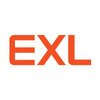Senior Analytics and Data Scientist
10+ Senior Analytics and Data Scientist Interview Questions and Answers

Asked in Subex

Q. Why do we need logistic regression when we can use linear regression?
Logistic regression is used when the dependent variable is categorical, while linear regression is used for continuous variables.
Logistic regression predicts the probability of an event occurring, while linear regression predicts the value of a dependent variable.
Logistic regression uses a sigmoid function to map the output to a probability value between 0 and 1.
Linear regression assumes a linear relationship between the dependent and independent variables, while logistic reg...read more

Asked in Ecolab Digital Center

Q. When would you use a Time series model over a regression model?
Time series is used when data points are collected over time and have a sequential order, while regression is used for predicting continuous outcomes based on independent variables.
Time series is used when analyzing data points collected at regular intervals over time.
Regression models are used when predicting continuous outcomes based on independent variables.
Time series can capture trends, seasonality, and cyclic patterns in data, while regression may not be able to capture...read more

Asked in Deloitte

Q. How would you build a scalable search system based on keywords, similar to Amazon Search?
Build a scalable keyword search system using indexing, ranking algorithms, and distributed architecture.
Use an inverted index to map keywords to product IDs for fast lookups.
Implement a ranking algorithm like TF-IDF or BM25 to prioritize search results.
Utilize distributed systems like Elasticsearch or Apache Solr for scalability.
Incorporate caching mechanisms (e.g., Redis) to speed up frequent queries.
Leverage machine learning for personalized search results based on user beh...read more

Asked in Deloitte

Q. What are the evaluation methods of Time Series Forecasting models?
Evaluation methods for time series forecasting assess model accuracy and reliability using various statistical metrics.
Mean Absolute Error (MAE): Measures average magnitude of errors in predictions without considering their direction.
Mean Squared Error (MSE): Squares the errors before averaging, giving more weight to larger errors.
Root Mean Squared Error (RMSE): Square root of MSE, providing error in the same units as the original data.
Mean Absolute Percentage Error (MAPE): E...read more

Asked in Zaalima Development

Q. How do you handle missing values in a dataset?
Handle missing values using techniques like imputation, deletion, or modeling.
Use imputation techniques like mean, median, mode for numerical data
For categorical data, use mode or create a new category for missing values
Consider using advanced techniques like KNN imputation or predictive modeling
Delete rows or columns with high percentage of missing values if appropriate

Asked in EXL Service

Q. What is the difference between Bagging and Boosting?
Bagging and Boosting are ensemble learning techniques used to improve model performance.
Bagging involves training multiple models on different subsets of the data and averaging their predictions.
Boosting involves training models sequentially, with each model focusing on the errors of the previous model.
Bagging reduces variance and overfitting, while boosting reduces bias and underfitting.
Examples of bagging algorithms include Random Forest and Extra Trees. Examples of boostin...read more

Asked in Go-Jek

Q. How would you solve a global search problem?
To solve a global search problem, I would utilize advanced algorithms and technologies to efficiently search through vast amounts of data from various sources.
Utilize advanced search algorithms like BFS, DFS, A*, etc.
Implement indexing and caching techniques to speed up search process.
Leverage distributed computing and parallel processing for faster search results.
Utilize machine learning and natural language processing for better search relevance.
Consider implementing a hybr...read more

Asked in Incedo

Q. explain rag in detail and design an api endpoint for it
RAG (Red, Amber, Green) is a traffic light system for assessing project status and performance metrics.
RAG status indicates project health: Red (critical issues), Amber (caution), Green (on track).
Used in project management to quickly communicate status to stakeholders.
Example: A project with budget overruns may be marked Red, while one meeting deadlines is Green.
RAG can be applied to KPIs, risk assessments, and performance reviews.
Share interview questions and help millions of jobseekers 🌟


Asked in Ecolab Digital Center

Q. What are the different types of Time Series?
Different types of Time Series include trend, seasonality, cyclic, and irregular components.
Trend: Long-term increase or decrease in data over time.
Seasonality: Repeating patterns or cycles at regular intervals.
Cyclic: Fluctuations that are not of fixed period.
Irregular: Random variations in data that cannot be attributed to trend, seasonality, or cyclic patterns.

Asked in IBM

Q. Explain Data Analytics in layman's terms.
Data analytics in business involves using data to analyze trends, patterns, and insights to make informed decisions and drive business growth.
Data analytics helps businesses make data-driven decisions by analyzing large sets of data.
It involves using statistical techniques and algorithms to uncover insights and trends.
Businesses can use data analytics to optimize operations, improve marketing strategies, and enhance customer experiences.
Examples include analyzing sales data t...read more

Asked in Accenture

Q. What is time series?
Time series is a sequence of data points collected at regular time intervals, used to analyze trends and patterns over time.
Time series data is ordered chronologically
Commonly used in forecasting future values based on past patterns
Examples include stock prices, weather data, and sales figures

Asked in Zebra Technologies

Q. Structured vs unstructured data
Structured data is organized and easily searchable, while unstructured data lacks a predefined format.
Structured data is organized into rows and columns, like a database.
Unstructured data includes text documents, images, videos, and social media posts.
Structured data is easier to analyze and query, while unstructured data requires more advanced techniques like natural language processing.
Examples of structured data include customer information in a CRM system, sales data in a...read more
Interview Questions of Similar Designations
Interview Experiences of Popular Companies








Reviews
Interviews
Salaries
Users
















